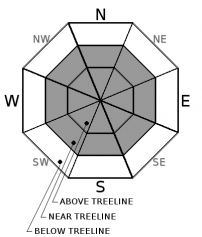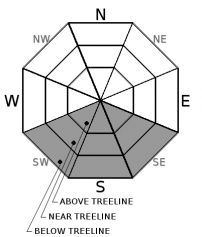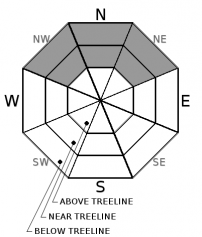| Sunday | Sunday Night | Monday | |
|---|---|---|---|
| Weather: | Sunny | Partly cloudy | Mostly cloudy |
| Temperatures: | 47 to 52 deg. F. | 30 to 35 deg. F. | 48 to 53 deg. F. |
| Mid Slope Winds: | Variable | Variable | Variable |
| Wind Speed: | Light with some gusts of 20 to 25 mph | Light | Light |
| Expected snowfall: | 0 | 0 | 0 |
| Sunday | Sunday Night | Monday | |
|---|---|---|---|
| Weather: | Sunny | Partly cloudy | Mostly cloudy |
| Temperatures: | 43 to 48 deg. F. | 31 to 36 deg. F. | 45 to 50 deg. F. |
| Ridge Top Winds: | Variable | Variable | Southwest |
| Wind Speed: | Light with some gusts of 25 to 30 mph | Light | 15 to 20 mph with gusts to 35 mph in the afternoon |
| Expected snowfall: | 0 | 0 | 0 |




























